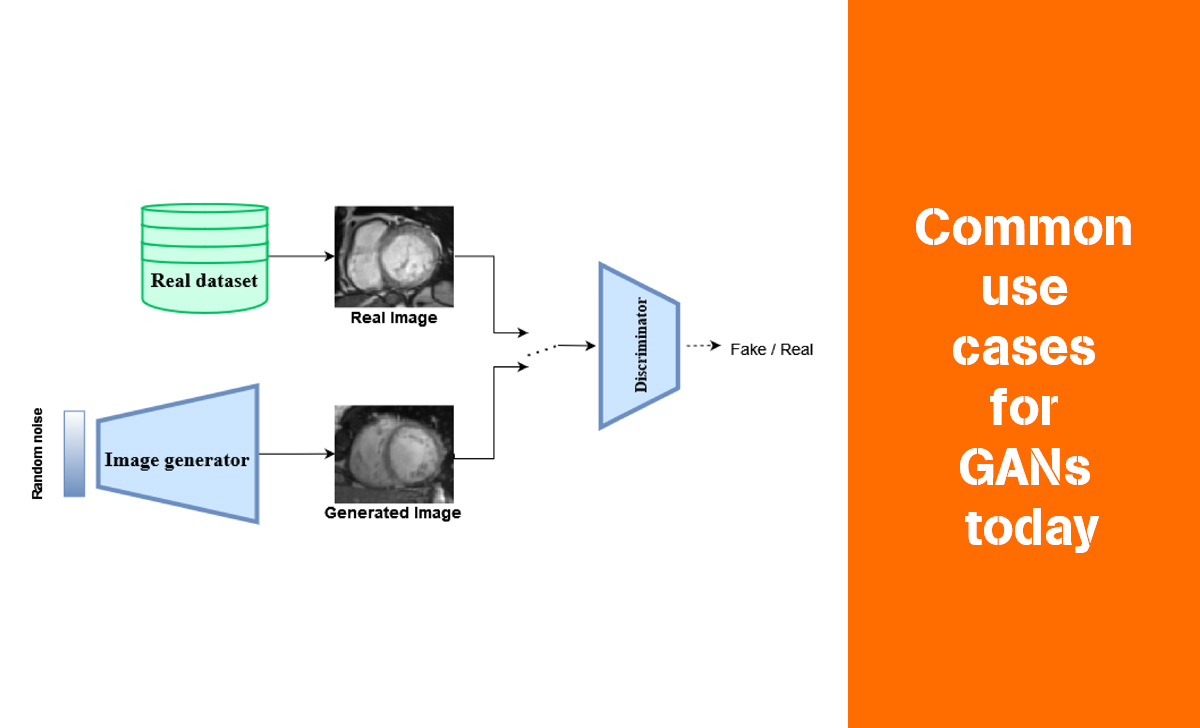GANs, or Generative Adversarial Networks, are one of the most important advances in machine learning today. Imagine two neural networks: one generates fake pictures, music, or text, while the other tries to tell the difference between real and fake. Through this confrontation, both networks become increasingly more sophisticated, resulting in creative and impressive content.
To help you better understand GANs (Generative Adversarial Networks). Please join AZcoin to learn about it right away through the following content!
What is GANs (Generative Adversarial Networks)?

Generative Adversarial Networks (GANs) are AI architectures that train two neural networks to compete with each other to create new data that is more authentic than a given training set. It is designed to mimic the structure and function of the human brain.
Generative Adversarial Networks are divided into two main types of neural networks:
- Generator: This network creates new data instances, such as images, music, or text, based on the patterns it learns from a training dataset.
- Discriminator: This network evaluates the generated data and determines whether it’s real or fake.
How do GANs (Generative Adversarial Networks) work?
GAN is a type of neural network architecture that consists of two main components: a generator and a discriminator. These two networks compete against each other in a game-like scenario, ultimately learning to generate real-world data. It basically works like this:
- Step 1: The neural network analyzes the training data and identifies its attributes.
- Step 2: It also distinguishes the independent attributes from the original training data.
- Step 3: The generator adds noise or random changes to the data attributes.
- Step 4: The generator sends the modified data to the discriminator.
- Step 5: The discriminator calculates the probability that the modified data belongs to the original dataset.
- Step 6: The discriminator provides instructions to the generator to reduce the randomness of the noise in the next cycle.
In addition, if you are interested in current cryptocurrency projects, you can follow the cryptocurrencies that are currently of interest such as: Digital Euro or Digital Yuan
Advantages and Disadvantages of Generative Adversarial Networks

Advantage
- High-Quality Data Generation: GANs are capable of generating highly realistic and diverse data samples, which can be used for various applications such as image generation, data augmentation, and style transfer.
- Unsupervised Learning: Unsupervised learning models, meaning they don’t require labeled data for training. This makes them applicable to a wide range of tasks where labeled data is scarce or expensive to obtain.
- Continuous Learning: Can continuously improve their performance over time by learning from new data and adapting to changing environments.
- Creative Applications: GANs have been used to create innovative applications in fields such as art, design, and entertainment, by generating novel and unexpected creative outputs.
Disadvantages
- Instability: Training GANs is challenging because the generator and discriminator can easily become imbalanced, causing instability and poor performance.
- Mode Collapse: Can experience mode collapse, where the generator produces only a limited variety of outputs, despite the training data being diverse.
- Lack of Interpretability: GANs often produce outputs that are hard to understand, making it difficult to debug and enhance their performance.
- Ethical Considerations: This can create deepfakes that may be misused for spreading misinformation or committing identity theft.
Overview of some types of GANs

GANs (Generative Adversarial Networks) có rất nhiều loại với nhiều dạng khác nhau dùng cho nhiều mục đích khác nhau. Sau đây là một số loại được dùng phổ biến hiện nay:
- Vanilla GAN: This is the simplest type, consisting of two neural networks: a generator that generates fake data and a discriminator that tries to distinguish between fake and real data.
- Super-resolution GAN: This type is used to increase the resolution of images, i.e. create higher-resolution images from low-resolution images.
- StyleGAN: A powerful GAN architecture specifically designed to generate realistic and diverse images, especially facial images. Allows image attributes such as age, gender, and expression to be adjusted independently.
- CycleGAN: Used to transform images from one domain to another, for example, converting a day photo into a night photo, or converting a landscape photo into a painting.
- Deep Convolutional GAN (DCGAN): A variant of GANs that uses convolutional layers to extract features from image data. DCGAN has become a basic architecture for many other GAN applications.
- Conditional GAN (cGAN): This is an extension, in which the generative network is provided with additional information (condition) to generate data that matches that condition. For example, you can provide a class label to generate an image of that class.
Common use cases for GANs today

GANs are becoming a popular ML model in online retail due to their ability to understand and reproduce visual content with high accuracy. They can be applied to many tasks, such as anomaly detection, data augmentation, image synthesis, and text-to-image conversion.
Cases, where users can apply GANs (Generative Adversarial Networks), include:
- Creating 3D models from 2D data
- Converting images from black and white to color
- Creating realistic images from product prototypes
- Training other models through data
- Creating AI tools that convert from text to images such as Midjourney AI Art
In video production, GANs are also applied to:
- Creating deepfake simulations.
- Simulating and predicting frames in videos.
- Modeling human behavior and movement in frames.
Conclusion
So together we have gone through all the most comprehensive and easy-to-understand content for GANs (Generative Adversarial Networks). Hope you enjoy this content and see you again in other even more interesting content at AZcoin.

I am Tony Vu, living in California, USA. I am currently the co-founder of AZCoin company, with many years of experience in the cryptocurrency market, I hope to bring you useful information and knowledge about virtual currency investment.
Email: [email protected]











